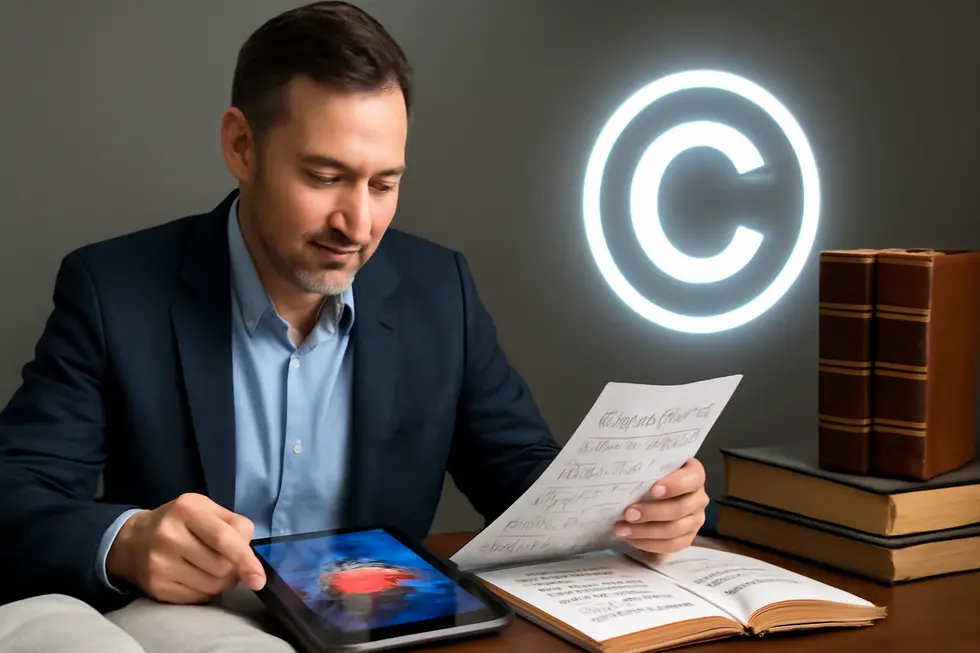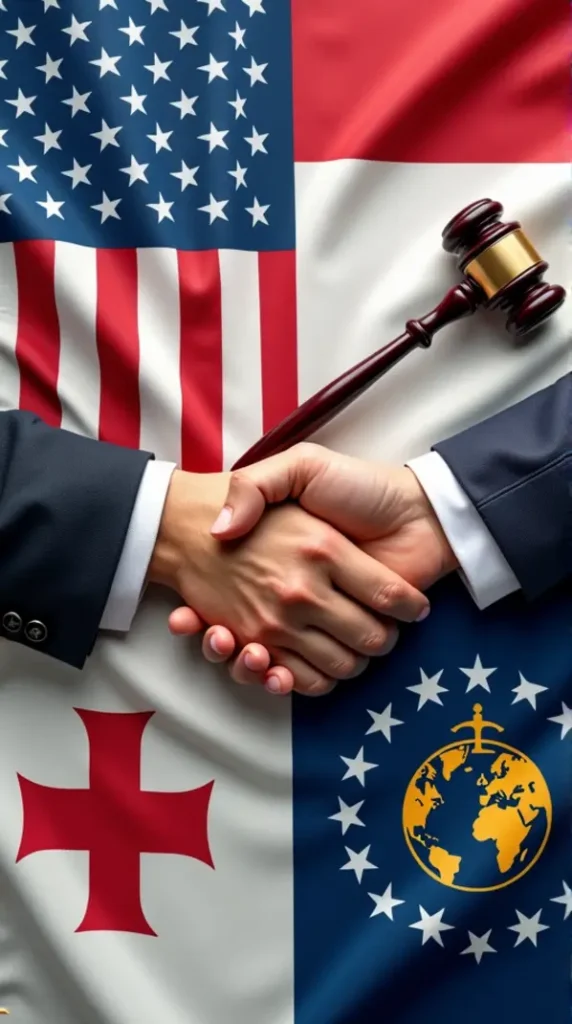Introduction
Copyright is a foundational legal concept that empowers creators by granting exclusive rights to their original works. For business owners, understanding copyright meaning and example is crucial to protecting assets, avoiding infringement, and leveraging intellectual property for growth. This article breaks down copyright’s legal foundations and definitions, explores how it safeguards creative works, clarifies the scope of rights it provides, illustrates real-world cases to demonstrate ownership, and examines important exceptions that balance creators’ control with public interest. Each chapter builds a comprehensive framework, enabling business leaders to confidently navigate copyright issues relevant to their creative and commercial endeavors.
Tables of Contents
Chapter 1: Understanding Copyright Meaning and Example: Legal Foundations and Definitions
- Legal Foundations and Constitutional Roots of Copyright Protection
- Key Definitions and the Comprehensive Scope of Copyright Protection
- Beyond the Basics: Practical Examples and Judicial Insights into Copyright Protection
Chapter 2: Exploring Copyright Meaning and Example in Creative Works Protection
- Legal Framework and Practical Application of Copyright in Creative Works
- Applying Copyright in Real-World Creative Works: Rights, Limits, and Legal Lessons
- Balancing Exclusive Copyright Rights with Fair Use for Creative and Societal Growth
Chapter 3: Copyright Meaning and Example: Rights Granted and their Scope
- Exploring the Creator’s Exclusive Copyright Rights and Their Legal Impact
- Navigating the Boundaries of Copyright: Limitations, Duration, and Public Domain
- Navigating Creative Control and Public Access: The Real-World Impact of Copyright Rights
Chapter 4: Applying Copyright Meaning and Example: Real-World Cases and Ownership
- Navigating Copyright Ownership and Enforcement: Legal Protections in Practice
- Navigating Copyrightable Creations and Boundaries of Ownership: What You Can Protect and Who Holds the Rights
- Exploring Landmark Copyright Cases and Their Economic Impact on Ownership Rights
Chapter 5: Exceptions and Limitations within Copyright Meaning and Example Framework
- Navigating Technology’s Role in Copyright Exceptions and Limitations
- Balancing Innovation and Creator Incentives: The Economic Impact of Copyright Exceptions and Limitations
- Navigating Societal Needs and Geopolitical Strategies in Copyright Exceptions
Chapter 1: Understanding Copyright Meaning and Example: Legal Foundations and Definitions
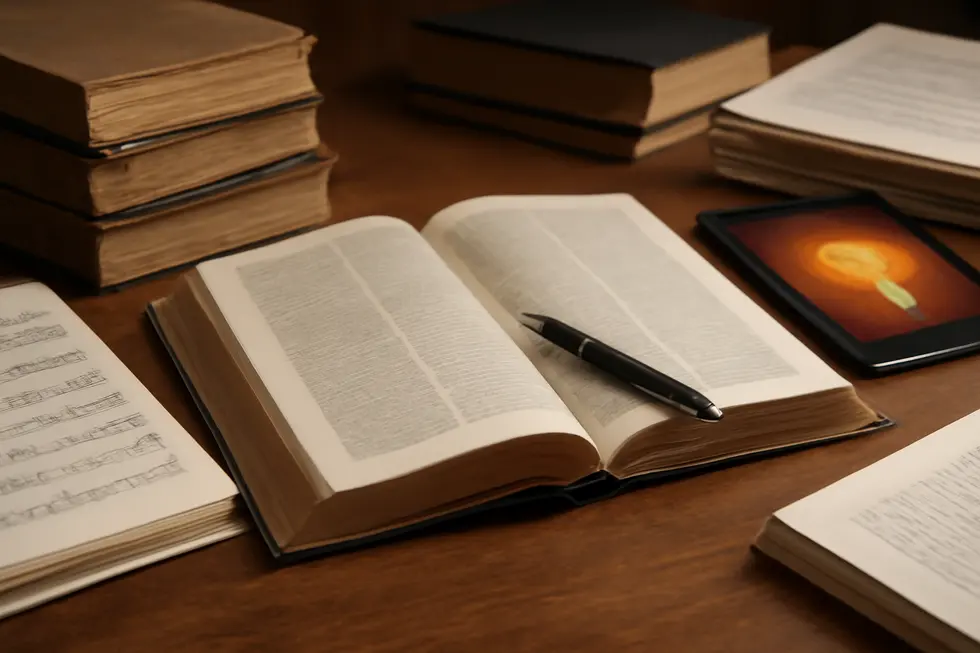
1. Legal Foundations and Constitutional Roots of Copyright Protection
Copyright establishes a vital legal framework protecting original works once they are fixed in a tangible medium. Rooted in the U.S. Constitution, specifically Article I, Section 8, this protection empowers Congress to grant creators exclusive rights to their writings and discoveries to promote progress in science and the arts. This constitutional foundation distinguishes copyright from other intellectual property rights by emphasizing both incentive and public benefit.
Copyright safeguards only the specific expression of ideas, not the underlying ideas themselves. This means original literary works, music, films, software code, and artistic creations receive protection when embodied in physical or digital form. The law grants creators exclusive rights including reproduction, public distribution, performance, display, and creation of derivative works. These rights arise automatically upon the work’s fixation with minimal originality, without the need for formal registration or copyright notice, though registration can enhance enforcement in legal disputes.
The duration of copyright typically extends for the life of the individual creator plus 70 years. For works created by corporations or anonymously, protection lasts either 95 years from publication or 120 years from creation, whichever expires sooner. Once these terms end, works enter the public domain, allowing anyone to freely use and build upon them. This time-limited exclusivity balances creators’ interests with public access over time.
For example, a songwriter who records an original composition gains automatic copyright protection at fixation. This prevents unauthorized copying or distribution without permission during the protection period, while the underlying musical concepts remain free for others to develop differently.
This legal framework closely aligns with the foundational principles outlined in basics of copyright law for businesses. For deeper details, authoritative sources such as McDaniel College’s Copyright Basics and the University of San Francisco’s Copyright Guide provide comprehensive explanations of these core concepts.
2. Key Definitions and the Comprehensive Scope of Copyright Protection
Copyright safeguards the original works of authorship once they are fixed in a tangible medium. This means the creative expression must be captured in a physical or digital form, such as written manuscripts, recorded sounds, or digital artwork. Copyright does not protect the mere ideas or concepts behind these works but rather their specific, original expression. The protection encompasses a wide range of creations—literary works, musical compositions, dramatic performances, films, software, and visual arts, among others.
At its core, copyright confers exclusive rights to the creator or copyright holder. These rights include reproducing the work, distributing copies, publicly performing or displaying it, and authorizing derivative works or adaptations. The moment the work is created and fixed, copyright automatically applies without requiring formal registration. Still, registering can enhance legal enforcement and provide additional remedies in infringement cases.
An author’s work gains protection as long as it meets two key criteria: originality, meaning it must have been independently created with minimal creativity, and fixation, meaning it is embodied in a medium that can be perceived or communicated. U.S. copyright law grants protection generally lasting for the author’s lifetime plus seventy years, ensuring that creators and their heirs enjoy control and financial benefits from these works for an extended period.
This framework creates a balance, allowing creators to benefit from their expressions while the public eventually gains access to creative works as copyrights expire. Examples illustrate this breadth: novels and photographs, songs and films, software code and paintings—all protectable under copyright. Unauthorized use of these works is prohibited unless exceptions like fair use apply.
For a deeper exploration of how copyright protects various creative forms, the article on copyright protection for books, movies, and songs offers valuable insight.
More details about the legal underpinnings of copyright can be found in the U.S. Constitution Article I, Section 8, which empowers Congress to promote creative innovation through such protections.
3. Beyond the Basics: Practical Examples and Judicial Insights into Copyright Protection
Copyright law grants creators exclusive control over their original works fixed in tangible form, covering a broad spectrum from literature and music to software and choreography. This protection is automatic once a work is created and recorded, without requiring registration, though registration strengthens legal enforcement. The law safeguards specific expressions rather than abstract ideas, ensuring that while an author’s unique presentation is protected, underlying concepts remain accessible for innovation and creativity by others.
Practical examples illuminate this principle: a novel printed on paper is safeguarded as a literary work, a painting on canvas is protected as a pictorial work, and digital programs or choreographed dances fixed via recording also qualify under copyright. These demonstrate the breadth of what tangible mediums encompass, emphasizing that fixation—physical or digital—is key to protection.
Judicial interpretations further refine copyright’s scope and application. Courts look beyond simple statute language to examine originality and copying. For example, “striking similarity” between two works may suggest infringement, even if direct evidence of copying is absent. Conversely, independent creation—such as two artists capturing the same scene separately—can negate infringement claims, despite visual likeness. These case-based rulings clarify ambiguous terms and safeguard creators’ rights while balancing fair use and public interest.
Ultimately, the law’s practical effect is a dynamic interplay between creators’ exclusive rights and judicial guidance that adapts to evolving creative contexts. For a deeper understanding of copyright protections for various media, including books, movies, and songs, explore this comprehensive resource on copyright protection.
More detailed statutory provisions and judicial case summaries can be found in official resources like the U.S. Copyright Act and related case law commentary.
Chapter 2: Exploring Copyright Meaning and Example in Creative Works Protection
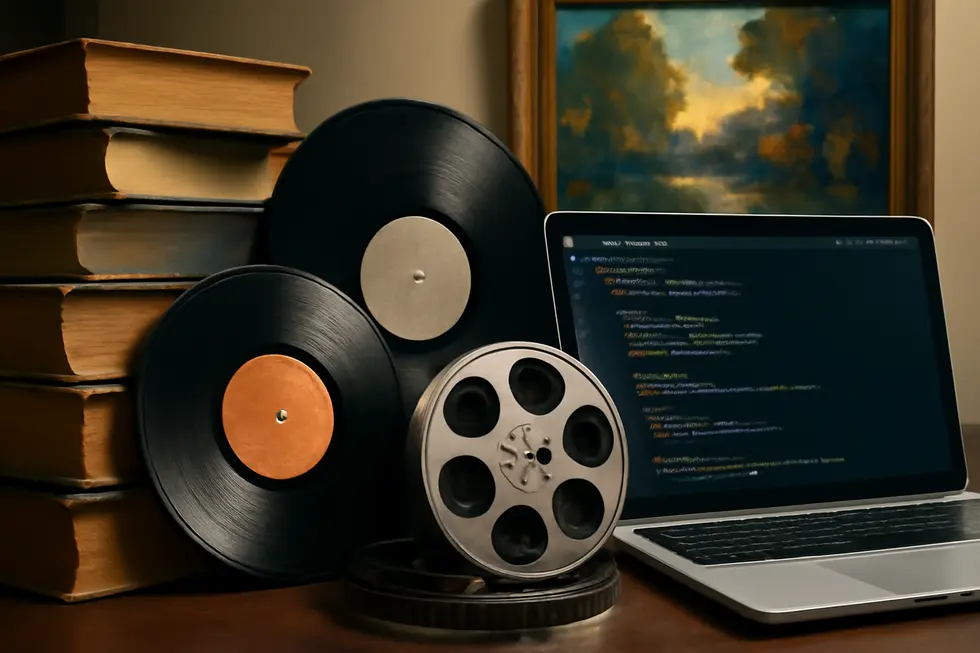
1. Legal Framework and Practical Application of Copyright in Creative Works
Copyright establishes a legal framework granting creators exclusive rights over their original works fixed in a tangible form. These rights empower creators to control reproduction, distribution, public performance, display, and the creation of derivative works. To qualify for copyright protection, a work must be both original and captured in a perceivable medium—whether written, recorded, or digitally stored. This ensures the expression of ideas, not the ideas themselves, receive legal safeguarding, reflecting the fundamental idea-expression dichotomy of copyright law.
The law balances creators’ interests with public benefit by imposing certain limitations and exceptions. For instance, doctrines such as fair use enable limited, unauthorized use of copyrighted works for purposes like criticism, education, or news reporting. Furthermore, copyright protection is not indefinite; it typically lasts for the author’s life plus 70 years in jurisdictions like the United States. After this period, works enter the public domain, becoming freely accessible.
Consider a songwriter who records and writes a song. From the moment the work is fixed in a tangible format, the songwriter automatically owns the copyright, granting exclusive protections. Any third party wishing to reproduce or publicly perform the song commercially must secure permission or risk infringement. This legal protection creates incentives for artistic creation by allowing creators to monetize and control their intellectual efforts.
While registration with a copyright office is optional, it significantly enhances the creator’s ability to enforce rights if disputes arise. Understanding this balance of rights and exceptions clarifies how copyright provides critical protection to creative works while respecting public interests.
For a more detailed exploration of the nuances and benefits of copyright, the basics of copyright law offer valuable insights. Additionally, the U.S. Copyright Office provides comprehensive information on legal standards and processes.
2. Applying Copyright in Real-World Creative Works: Rights, Limits, and Legal Lessons
Copyright grants creators exclusive control over their original works as soon as these are fixed in a tangible form, whether physical or digital. This protection covers an array of creative expressions—books, music, films, software, art, and beyond—ensuring that authors govern how their works are reproduced, distributed, performed, or transformed into derivative creations. For example, owning the copyright to a song or movie empowers the creator or rights holder to authorize licenses, prevent unauthorized copying, and monetize their intellectual property.
However, copyright is not absolute. One crucial legal balance is the fair use doctrine, which permits limited uses like commentary, teaching, news reporting, or parody without requiring authorization. This ensures that copyright law supports creativity and cultural exchange without stifling education or critique. Courts often analyze the purpose of use, the nature of the work, the amount used, and its impact on the market to determine whether fair use applies.
Disputes often arise when works are copied without permission or when derivative works are created, triggering litigation to clarify ownership and fair use boundaries. Case studies reveal how courts weigh factors such as originality, the extent of copying, and contractual relationships between creators and employers or publishers. These legal battles underscore how copyright law not only protects creators but also navigates complex scenarios involving collaboration, adaptation, and evolving technology.
By understanding both the rights copyright confers and its limits, creators can better safeguard their works and leverage them commercially while contributing to a dynamic cultural ecosystem. For further insight into copyright’s scope and protections, the Connecticut State Library’s Copyright Basics guide offers a detailed, authoritative resource.
3. Balancing Exclusive Copyright Rights with Fair Use for Creative and Societal Growth
Copyright provides creators with exclusive rights over their original works fixed in a tangible form, such as books, music, art, software, and films. These rights include reproduction, distribution, performance, and adaptation, granting creators control to benefit financially and protect their creative vision. This legal framework lasts for the life of the author plus seventy years, automatically applying when the work is created without requiring formal registration, although registration enhances enforcement capabilities. Without such protections, original creators could see their efforts copied or exploited without credit or compensation.
However, copyright law also recognizes the importance of public interest and cultural development, which is where the doctrine of fair use plays a vital role. Fair use permits limited use of copyrighted material without explicit permission when used for purposes like criticism, commentary, teaching, research, or news reporting. Courts consider factors such as the purpose and character of use, the nature of the copyrighted work, how much of the work is used, and the impact on the original’s market value when determining fair use. This nuanced approach ensures copyright does not unduly restrict creativity, scholarship, or free speech.
In addition, licensing agreements allow creators to authorize others to use their works under specific terms, while derivative works require permission unless covered by fair use or other exceptions. Once copyrights expire, works enter the public domain, becoming freely available for everyone. Transformative use—where a new work changes the original in meaning or context—often supports fair use claims, fostering artistic innovation and societal dialogue.
Together, these principles create a balanced structure that safeguards creators’ moral and economic rights while encouraging education, commentary, and cultural progress. This harmony is essential for a thriving creative ecosystem where intellectual property rights coexist with the public’s right to access and build upon prior works. For further detail on copyright scope and fair use principles, see this comprehensive resource.
To deepen understanding of protecting creative works, consider exploring best practices in copyright protection for books, movies, and songs through copyright protection insights.
Chapter 3: Copyright Meaning and Example: Rights Granted and their Scope
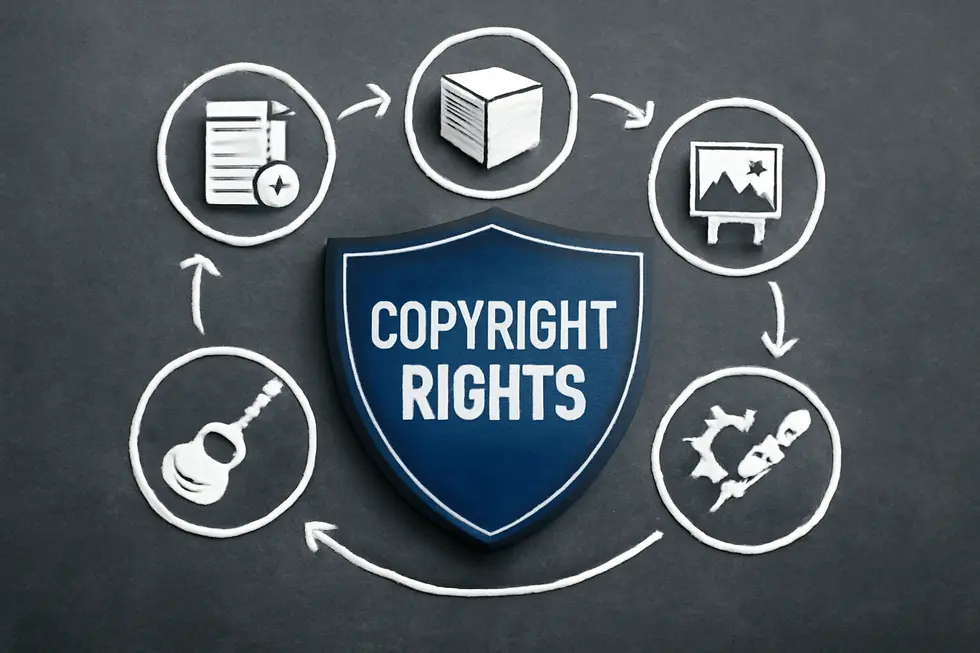
1. Exploring the Creator’s Exclusive Copyright Rights and Their Legal Impact
Understanding the Core of Copyright Rights
Copyright grants creators exclusive control over their original works once fixed in a tangible form. This legal protection is automatic with the creation of a work such as a novel, song, or film, securing the creator’s ability to govern how the work is used, reproduced, and shared. Importantly, copyright safeguards the expression of ideas, not the underlying ideas themselves.
Creators receive a bundle of exclusive rights that empower them to manage and monetize their creations effectively. These include the right to reproduce the work, distribute copies to the public, perform or display it publicly, and produce derivative works like adaptations or sequels. For instance, an author not only controls the printing and sale of their book but also the creation of movie scripts or dramatizations based on it.
These rights enable creators to license their works, granting permission while often retaining ownership. However, creators may transfer some or all of these rights through contracts, which can alter who controls the work’s uses later. This system ensures creators both benefit economically and maintain integrity over their creations.
Legal Boundaries and Enforcement
The law forbids unauthorized use of copyrighted works, allowing creators to issue cease and desist orders or seek damages through infringement lawsuits. Although copyright arises automatically, formal registration enhances enforcement, as it is a prerequisite for bringing a lawsuit in the United States. Moreover, copyright protection operates under specific limits. Doctrines like fair use permit certain unlicensed uses for criticism, education, or parody, balancing creators’ rights with public interest.
Copyright’s scope also depends on legal jurisdiction but benefits from international treaties harmonizing protection standards.
For creators and businesses navigating intellectual property, understanding these rights is crucial. Detailed insights on how copyright protects books, movies, and songs can be found in this guide on copyright protection.
In essence, copyright provides creators with powerful, enforceable rights to control their works, fostering creativity while respecting fair and legal limitations.
2. Navigating the Boundaries of Copyright: Limitations, Duration, and Public Domain
Copyright provides creators with exclusive rights to reproduce, distribute, publicly perform, and adapt their original works fixed in tangible forms like books, music, films, and software. However, these rights are not unlimited. The scope of copyright carefully balances creator control with public interest by imposing clear limits on what is protected and for how long.
Key limitations include the fair use or fair dealing doctrines, which permit limited use of copyrighted materials without permission for purposes like criticism, research, education, news reporting, or parody. These exceptions ensure that copyright law does not stifle freedom of expression or access to information. Additionally, certain institutional uses—such as by libraries, archives, and educational organizations—are allowed under specific conditions, facilitating cultural preservation and learning.
Copyright does not protect mere ideas, facts, short phrases, or government works, and it excludes content that has entered the public domain. The duration of protection varies: for individual authors, it generally lasts for the author’s life plus 70 years after death. For works created anonymously or by corporations, protection expires 95 years from publication or 120 years from creation, whichever is shorter. Once a work’s copyright term ends, it enters the public domain, making it freely accessible for anyone to use, adapt, or share without restriction.
This framework crafts a legal environment where creators retain meaningful control over their works, while society benefits from free access to knowledge and culture over time. For a detailed overview of copyright limitations, exceptions, and duration, the University of Toronto Library Guide offers valuable insight.
Understanding these boundaries is essential for anyone navigating copyright matters, informing how exclusive rights operate within legal limits and how public interest is safeguarded through exceptions and time-based protections.
3. Navigating Creative Control and Public Access: The Real-World Impact of Copyright Rights
Copyright law grants creators exclusive control over how their original works are used, shaping the landscape of creativity and commerce. These legal rights empower authors, musicians, software developers, and artists to reproduce, distribute, perform, and adapt their works, enabling them to monetize and protect their intellectual property. Such control often materializes through licensing agreements, which specify the terms and scope under which others may legally use copyrighted materials without transferring ownership. For example, a songwriter might license a track for use in a film, or a developer may allow their software code to be incorporated into another application. These carefully outlined licenses address duration, territory, exclusivity, and permitted uses, safeguarding creators’ interests while facilitating wider distribution.
However, copyright is balanced to serve both creators and the public. The doctrine of fair use permits limited, unlicensed use of copyrighted materials in cases like commentary, education, research, news reporting, parody, and satire. This crucial exception encourages new creative expressions and access to information, preventing copyright from becoming an absolute barrier. For instance, a news outlet exposing corporate wrongdoing may quote from a protected document under fair use, enabling vital social discourse without infringement.
This balance reflects the constitutional aim to promote scientific progress and the arts by granting exclusive rights that incentivize creation while preserving public access for transformative, socially beneficial uses. Thus, copyright not only secures economic rights but also fosters cultural growth by integrating protections with reasonable limitations.
For a deeper understanding of how copyright licenses operate in practice, see guide to copyright licensing. For insights into fair use balancing access and creativity, visit Fair Use Doctrine: Balancing Creativity and Access to Knowledge.
Additional perspectives on protecting creative works can be explored in copyright protection for books, movies, and songs.
Chapter 4: Applying Copyright Meaning and Example: Real-World Cases and Ownership
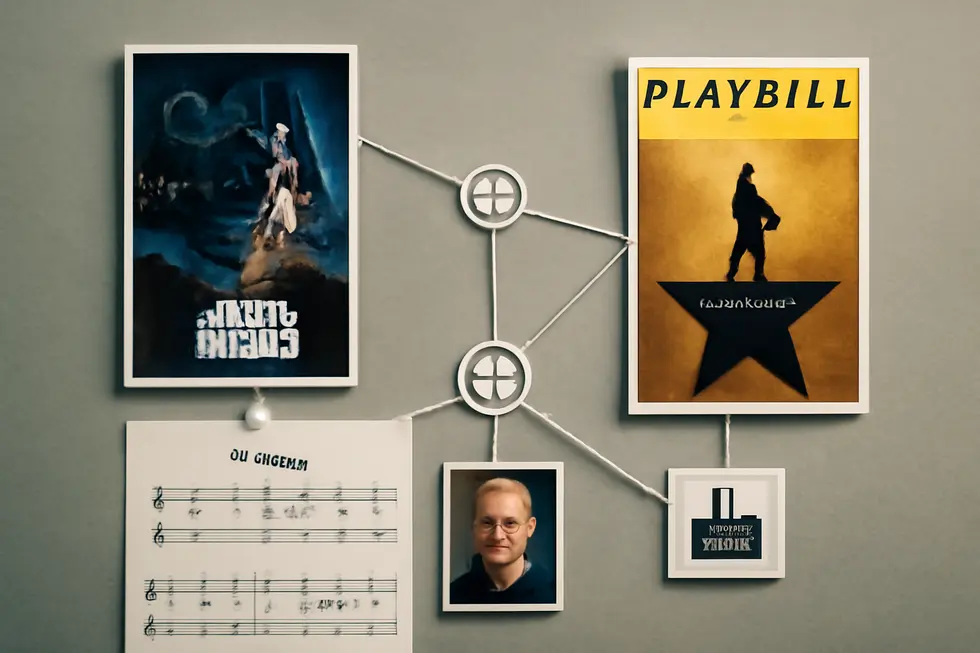
1. Navigating Copyright Ownership and Enforcement: Legal Protections in Practice
Copyright ownership is established instantly when a creator fixes their original work in a tangible form like writing, recording, or designing. This automatic ownership grants exclusive rights to reproduce, distribute, perform, or adapt the work. However, ownership can shift through work-for-hire arrangements, contracts, or joint authorship where multiple creators contribute to an inseparable whole. For example, an employee’s creations under their job duties often belong to the employer rather than the individual creator.
The scope of these legal protections further depends on formalities such as copyright registration. While not required for ownership, registering a work with the U.S. Copyright Office enhances the ability to enforce rights in court, including potential statutory damages and attorney fees. This procedural step is crucial for commercial works like books or videos to maximize legal remedies against infringement.
Copyright law balances creators’ exclusive control with public interests by allowing limited exceptions such as fair use. This permits unauthorized uses for purposes like criticism, education, news reporting, and parody, provided such use does not unduly harm the work’s commercial value. Courts evaluate these exceptions on a case-by-case basis, making enforcement context-dependent rather than strictly formulaic.
Real-world instances demonstrate how these principles apply: a book author holds copyright from the moment of writing, while a filmmaker controls adaptation rights but may license distribution to studios. Similarly, creators can transfer or license rights contractually, influencing who may legally exploit the work.
Understanding these nuances highlights that copyright protects the specific expression of ideas fixed in a medium, not the ideas themselves, granting creators vital economic and moral rights. For further insight into copyright protections across media types and jurisdictions, see Britannica’s comprehensive overview on copyright law.
For more detailed information on copyright protection for books, movies, and songs, visit Copyright Protection for Books, Movies & Songs.
2. Navigating Copyrightable Creations and Boundaries of Ownership: What You Can Protect and Who Holds the Rights
Copyright grants creators exclusive control over their original works fixed in a tangible medium. This protection applies to a broad range of original creations—such as literary pieces, musical compositions, software, visual arts, films, and architectural designs—provided they are expressed in some physical or digital form. The key is originality combined with fixation, ensuring these works are concrete enough for protection but distinct from mere ideas.
Not every element within or related to a work is copyrightable. Facts, ideas, short phrases, slogans, logos, and government-produced works generally fall outside copyright protection. This distinction safeguards the free use of fundamental knowledge and information, allowing society to build upon unprotected ideas while protecting the unique expression of those ideas.
Ownership typically begins with the author, but there are exceptions. Works created under “work-for-hire” agreements assign ownership to the employer or commissioning party instead. Furthermore, authors can transfer or license their rights through contracts, enabling others to use the works under specific terms while the original creator retains ownership. This flexibility supports commercial use and collaboration without compromising the author’s fundamental rights.
Limitations on copyright ownership ensure a balance between protectors and the public. Doctrines like fair use permit limited utilization of copyrighted content for activities such as education, commentary, news reporting, and parody, provided such use does not negatively impact the market value of the original work. Other statutory exceptions, such as compulsory licenses, enable certain public uses like broadcasting, maintaining access while respecting creators’ interests.
Understanding what qualifies for copyright and how ownership can shift or be limited is crucial in applying copyright law effectively. This nuanced framework both safeguards creators’ rights and fosters societal creativity. For further insight into copyrightable works and ownership nuances, the University of Texas copyright guide offers valuable detail.[5] For an overview of copyright protection for books, movies, and songs is a helpful resource.
3. Exploring Landmark Copyright Cases and Their Economic Impact on Ownership Rights
Copyright grants creators exclusive control over their original works fixed in a tangible medium, shielding their economic interests and creative contributions. This legal protection includes rights to reproduce, distribute, perform, and create derivative works, enabling owners to monetize their creations effectively. The scope and limits of these rights have been shaped by pivotal court rulings that clarify what qualifies for protection and how ownership disputes are resolved.
One seminal case, Feist Publications, Inc. v. Rural Telephone Service Co., established the crucial requirement of originality in copyright protection. The U.S. Supreme Court ruled that mere compilations of facts without creative selection or arrangement are not copyrightable. This decision safeguards a balance by ensuring that copyright protects genuine creative expression rather than raw data or information.
Another foundational case, Burrow-Giles Lithographic Co. v. Sarony, affirmed copyright protection for photographic works, emphasizing that originality extends to artistic photography just as it does to traditional arts. Cases like Andrien v. Oberlin College further address ownership and authorship complexities, illustrating how courts navigate disputes about who holds rights when multiple contributors or institutions are involved.
These judicial landmarks collectively define the boundaries within which copyright operates, influencing creators’ ability to control and benefit from their works economically. Copyright ownership enables licensing, distribution control, and adaptation rights, which generate significant revenue streams in fields such as publishing, music, film, and software development. However, the legal framework also incorporates exceptions like fair use and compulsory licenses, ensuring public access, commentary, and educational use remain viable.
Understanding these cases and their implications provides insight into the dynamic relationship between protecting creators’ economic interests and preserving the public domain’s vitality. For deeper exploration of how copyright protects diverse creative expressions, see this detailed overview on copyright protection for books, movies, and songs. Additionally, the U.S. Copyright Office offers comprehensive summaries of landmark cases to further illustrate this evolving legal landscape.
Chapter 5: Exceptions and Limitations within Copyright Meaning and Example Framework
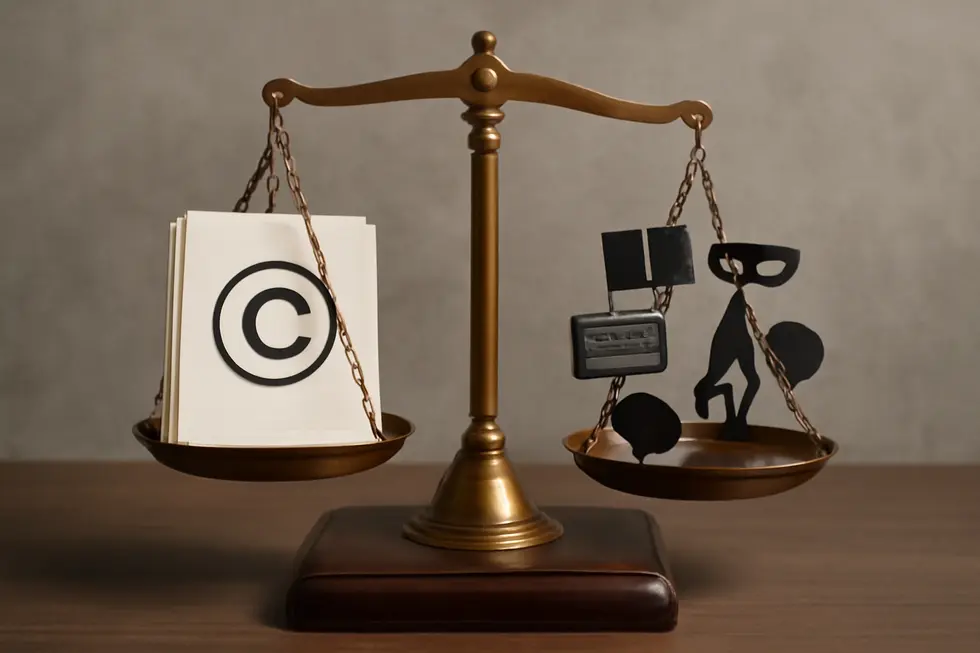
1. Navigating Technology’s Role in Copyright Exceptions and Limitations
Navigating Technology’s Role in Copyright Exceptions and Limitations
Modern copyright law must contend with complex technological environments that challenge traditional notions of creative ownership and usage. Copyright protects only the specific expression of ideas fixed in tangible forms—not the underlying concepts, methods, or technical standards. This distinction is critical in technology-driven fields, where software code, protocols, or standards often operate as a foundation for innovation without infringing copyrights unless the exact expression is copied. For instance, implementing a widely adopted technical standard in software usually does not violate copyright if the implementer avoids duplicating the precise text or layout.
The principles of fair use or fair dealing facilitate limited, lawful access to copyrighted materials in digital formats, especially for education, commentary, and research. Educational institutions leveraging copyrighted works electronically must enforce strict technological access controls to restrict availability only to authorized users. Such compliance aligns with regulations similar to the TEACH Act, which balance accessibility with the protection of rights holders. Teachers may reproduce small portions for instructional purposes, while students can perform works internally, yet all usages must respect embedded technological security measures designed to prevent unauthorized dissemination.
Libraries and archives frequently digitize materials to improve accessibility, particularly for persons with disabilities. Legal frameworks permit these adaptations under specific exceptions that override print format limitations and often include safeguards to ensure that digital copies are not misappropriated. This approach harmonizes public interest with protection for copyright holders. Furthermore, the rise of AI-generated content introduces emerging challenges. Determining whether such outputs infringe copyrights hinges on their originality and transformative nature, assessed under doctrines like fair use.
In practice, these technological considerations highlight the evolving interface between legal exceptions and digital environments. Creators and users alike must navigate nuances distinguishing protected expression from unprotected ideas, all while maintaining compliance with digital rights management and access controls. For a deeper understanding of how technology intersects with copyright protections, the article on copyright protection of books, movies, and songs offers valuable insights.
For broader context on these themes, the guidelines issued by the Copyright Office and legal experts provide essential frameworks to address the swift evolution of technology alongside copyright law.
2. Balancing Innovation and Creator Incentives: The Economic Impact of Copyright Exceptions and Limitations
Exceptions and limitations within copyright law carry profound economic consequences, shaping how innovation and creative incentives coexist. These constructs, including fair use and specialized exemptions like AI training allowances, serve as pivotal mechanisms that promote technological advancement and broader access to information. However, they simultaneously introduce tension, as they can diminish direct revenue streams for authors, publishers, and other rights holders.
A notable example lies in proposals such as those by the Australian Productivity Commission, which suggest permitting AI systems to train on copyrighted content without prior authorization. Analysts estimate this could spur up to A$116 billion in economic gains over a decade by accelerating AI-related industries. Yet, this potential boon raises significant concerns for creators worried about the erosion of their financial rewards and the sustainability of cultural production, especially when large multinational technology firms may disproportionately benefit compared to smaller, local artists.
The selective enforcement of copyrights also reveals economic strategy in practice. Some rights holders opt not to pursue infringement claims despite losses, or enforce rights aggressively without measurable harm, creating unpredictable market behaviors and influencing how protective copyright law effectively is as an economic tool. For instance, the de minimis exception in the music industry highlights the fine line between protecting revenue and fostering creativity through sampling. Varying judicial interpretations of what constitutes a minimal use impact legal certainty, influencing industry practices and economic incentives for both creators and users.
Legislative moves that mandate transparency from AI developers regarding copyrighted materials used in training datasets aim to harmonize innovation with economic fairness. Such efforts reflect ongoing attempts to balance competitive markets, intellectual property rights, and the costs associated with creative innovation.
In essence, the economic landscape shaped by copyright exceptions and limitations demands frameworks that sustain creative investment without stifling progress and public benefit. For more on how copyrights protect economic interests while enabling creative expression, see copyright protection for books, movies, and songs.
Source: Australian Productivity Commission, 2023
3. Navigating Societal Needs and Geopolitical Strategies in Copyright Exceptions
Exceptions and limitations within copyright law play a pivotal role in harmonizing creators’ exclusive rights with broader societal and geopolitical priorities. These legal carve-outs permit limited uses of copyrighted materials without explicit authorization, fostering knowledge dissemination, innovation, and cultural growth while preserving the economic incentives vital to creative industries.
From a societal standpoint, copyright exceptions enhance public access to education and research, essential for social advancement. For example, the European Union’s Digital Single Market Directive enshrines mandatory exceptions for text and data mining (TDM) by research institutions, enabling scientific progress while respecting creators’ rights. Similarly, national laws like the UK’s Copyright Designs and Patents Act recognize educational uses as exceptional contexts where limited copying can occur without infringement, reflecting a commitment to equitable knowledge sharing.
Geopolitically, the design and enforcement of copyright exceptions mirror distinct national priorities. The United States employs a flexible fair use doctrine within a rigorous legal framework that safeguards individual creators’ property while enabling adaptable public interest uses. Contrastingly, China’s approach emphasizes patents and state-led innovation strategies, showcasing a policy-driven alignment of intellectual property rights with economic development goals. Such divergences highlight how geopolitical considerations shape legal boundaries, balancing protection with access differently across jurisdictions.
These exceptions, therefore, embody a delicate tension: they restrict exclusive rights enough to promote socially beneficial activities like education, research, and AI training, while maintaining creative incentives. For instance, the EU allows unlicensed text and data mining solely for scientific purposes, reflecting societal values emphasizing inclusive innovation. The UK’s educational copying provisions further demonstrate this balance.
In sum, copyright limitations and exceptions form an evolving matrix where social justice concerns about access coexist with geopolitical ambitions of innovation governance. This balance ultimately sustains a dynamic intellectual property ecosystem that supports creators and society alike.
For a deeper understanding of copyright protections in creative works, see copyright protection for books, movies, and songs.
External resource: EU Digital Single Market Directive.
Final thoughts
Grasping the meaning and examples of copyright is indispensable for business owners to protect their creative assets and intellectual property strategically. By understanding the legal foundations, recognizing what types of works are protected, knowing the precise rights granted, analyzing real-world ownership cases, and appreciating critical exceptions, businesses can safeguard their innovations while respecting legal boundaries. This knowledge not only fortifies control over proprietary content but also supports informed decision-making critical to sustainable growth in today’s competitive marketplace.
Get your trademark today! Thousands have protected their brand by filing a trademark. What are you waiting for? Start your trademark application!
About us
The globe’s top website for registering trademarks and safeguarding your brand, name, logo, or slogan.
